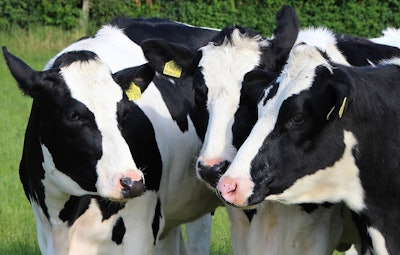
While it may be a truism to say that a virus must be present to be detected, simply reporting virus’ detection tells you little more than that. The March 25 statement from the U.S. Department of Agriculture (USDA) that H5N1 highly pathogenic avian influenza had been detected in dairy cattle for the first time was no more than that, an announcement that it had been detected. It would seem that the virus could have been present in the U.S. dairy herd since late last year.
A recently published paper in scientific journal Nature details an analysis, albeit preliminary and rapidly conducted, of scientific evidence entered into a public depository by the U.S. Food and Drug Administration (FDA) that suggests that the outbreak is likely to have begun in late December 2023 or early January 2024.
Nature suggests that cattle across the U.S., and even in neighboring regions, could have been infected with HPAI, and the World Health Organization has warned that it could spread to cattle in other countries.
The report’s author says that, worryingly, the FDA data that could shed light on the outbreak’s origins and evolution contain gaps , which has been described as “abnormal," leading to questions about transparency. What has been found, however, is genetic diversity in the virus infecting cattle, suggesting that it has had months to evolve. The data also shows jump back from infected cows to birds.
Infected dairy cattle are known to be present in nine U.S. states and, since April 29, it has been a requirement to test lactating dairy cattle for HPAI prior to interstate movement. A measure, perhaps, that could be viewed as coming just a little late.
H5N1 in 1 in 5 US milk samples
A few days prior publication of the Nature paper, the FDA released the results of a nationally representative study of retail milk that showed that one in five samples had tested positive for HPAI virus fragments.
In the April 25th announcement, the FDA explained that the study’s milk samples were quantitative polymerase chain reaching (qPCR)-positive for viral fragments, with a greater proportion of positive results coming from areas with infected herds.
It added that, the qPCR-positive results did not, necessarily, represent actual virus that may be a risk to consumers, and continued that additional testing was required to determine whether intact pathogen was still present and whether it remained infectious. This, it said, would help inform a determination of whether there was any risk of illness associated with consuming milk.
The following day it published additional information from its study with preliminary results showing that pasteurization was effective in inactivating HPAI. These additional results, it said, did not detect live virus, reaffirming its assessment that the commercial milk supply was safe. Consumption of raw milk, and raw milk based cheese, however, is not advised.
Swift response essential
A swift response to any virus outbreak is essential. The longer that a virus has to spread, the harder it becomes to control, and associated problems grow in scale.
While it should be a concern to all of us that HPAI has been found in yet another mammalian species, what may be a particular worry for the poultry industry is that, according to the American Veterinary Association (AVMA), evidence suggests that the virus can spread from dairy cattle premises to nearby poultry facilities.
